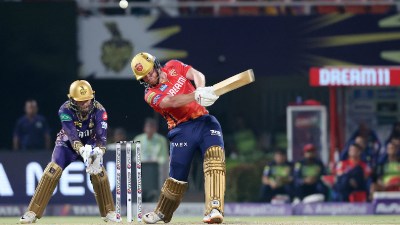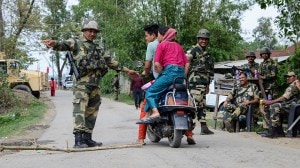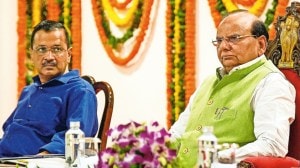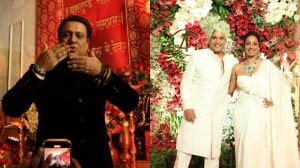- India
- International
Explained: The logic of, and debate around minimum age of marriage for women
Prime Minister Narendra Modi has announced that the Centre will decide on the recommendations of a committee set up to reconsider the minimum age of marriage for women. Currently, the law prescribes a minimum age of 21 years for men and 18 years for women.
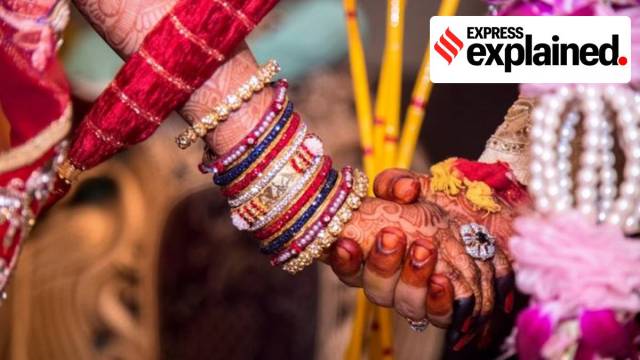 The minimum age of marriage, especially for women, has been a contentious issue. (Representational Image)
The minimum age of marriage, especially for women, has been a contentious issue. (Representational Image)Prime Minister Narendra Modi said that the central government has set up a committee to reconsider the minimum age of marriage for women during his address to the nation on the 74th Independence Day.
“We have set up a committee to reconsider the minimum age of marriage for girls. The Centre will take a decision after the committee submits its report,” he said.
The minimum age of marriage, especially for women, has been a contentious issue. The law evolved in the face of much resistance from religious and social conservatives. Currently, the law prescribes that the minimum age of marriage is 21 years and 18 years for men and women respectively.
The minimum age of marriage is distinct from the age of majority which is gender-neutral. An individual attains the age of majority at 18 as per the Indian Majority Act, 1875.
What is the committee that the Prime Minister mentioned in his speech?
On June 2, the Union Ministry for Women and Child Development set up a task force to examine matters pertaining to age of motherhood, imperatives of lowering Maternal Mortality Ratio and the improvement of nutritional levels among women. The task force will examine the correlation of age of marriage and motherhood with health, medical well-being, and nutritional status of the mother and neonate, infant or child, during pregnancy, birth and thereafter.

Also in Explained | How the Quit India movement gave a new direction to India’s freedom struggle
It will also look at key parameters like Infant Mortality Rate (IMR), Maternal Mortality Rate (MMR), Total Fertility Rate (TFR), Sex Ratio at Birth (SRB) and Child Sex Ratio (CSR), and will examine the possibility of increasing the age of marriage for women from the present 18 years to 21 years.
Headed by former Samata Party president Jaya Jaitely, the committee includes Member Health at the NITI Aayog, Dr Vinod Paul, and several Secretaries to the Government of India.
Why is there a minimum age for marriage?
The law prescribes a minimum age of marriage to essentially outlaw child marriages and prevent the abuse of minors. Personal laws of various religions that deal with marriage have their own standards, often reflecting custom.
For Hindus, Section 5(iii) of The Hindu Marriage Act, 1955, sets 18 years as the minimum age for the bride and 21 years as the minimum age for the groom. However, child marriages are not illegal — even though they can be declared void at the request of the minor in the marriage.
In Islam, the marriage of a minor who has attained puberty is considered valid.
The Special Marriage Act, 1954 and the Prohibition of Child Marriage Act, 2006 also prescribe 18 and 21 years as the minimum age of consent for marriage for women and men respectively.
Additionally, sexual intercourse with a minor is rape, and the ‘consent’ of a minor is regarded as invalid since she is deemed incapable of giving consent at that age.
How did the law evolve?
The Indian Penal Code enacted in 1860 criminalised sexual intercourse with a girl below the age of 10. The provision of rape was amended in 1927 through The Age of Consent Bill, 1927, which declared that marriage with a girl under 12 would be invalid. The law faced opposition from conservative leaders of the Indian National Movement, who saw the British intervention as an attack on Hindu customs.
A legal framework for the age of consent for marriage in India only began in the 1880s.
In 1929, The Child Marriage Restraint Act set 16 and 18 years as the minimum age of marriage for girls and boys respectively. The law, popularly known as the Sarda Act after its sponsor Harbilas Sarda, a judge and a member of Arya Samaj, was eventually amended in 1978 to prescribe 18 and 21 years as the age of marriage for a woman and a man respectively.
Why is the legal age of marriage different for men and women?
There is no reasoning in the law for having different legal standards of age for men and women to marry. The laws are a codification of custom and religious practices. The Law Commission consultation paper has argued that having different legal standards “contributes to the stereotype that wives must be younger than their husbands”.
Women’s rights activists have argued that the law also perpetuates the stereotype that women are more mature than men of the same age and, therefore, can be allowed to marry sooner.
The international treaty Committee on the Elimination of Discrimination against Women (CEDAW), also calls for the abolition of laws that assume women have a different physical or intellectual rate of growth than men.
Don’t miss from Explained | How did India get its national flag?
The Commission recommended that the minimum age of marriage for both genders must be set at 18. “The difference in age for husband and wife has no basis in law as spouses entering into a marriage are by all means equals and their partnership must also be of that between equals,” the commission noted.
Why is the law being relooked at?
From bringing in gender-neutrality to reduce the risks of early pregnancy among women, there are many arguments in favour of increasing the minimum age of marriage of women. Early pregnancy is associated with increased child mortality rates and affects the health of the mother.
Despite laws mandating minimum age and criminalising sexual intercourse with a minor, child marriages are very prevalent in the country.
Last year, the Delhi High Court also sought the central government’s response in a plea that sought a uniform age for marriage for men and women. The public interest litigation was filed by advocate and Bharatiya Janata Party spokesperson Ashwini Kumar Upadhyaya.
What are the grounds on which the law was challenged?
Upadhyaya, the petitioner in this case, had challenged the law on the grounds of discrimination. He argued that Articles 14 and 21 of the Constitution, which guarantee the right to equality and the right to live with dignity, were violated by having different legal ages for men and women to marry.
Two significant Supreme Court rulings can act as precedents to support the petitioner’s claim.
In 2014, in the ‘National Legal Services Authority of India v Union of India’ case, the Supreme Court, while recognising transgenders as the third gender, said that justice is delivered with the “assumption that humans have equal value and should, therefore, be treated as equal, as well as by equal laws”.
In 2019, in ‘Joseph Shine v Union of India’, the Supreme Court decriminalised adultery, and said that “a law that treats women differently based on gender stereotypes is an affront to women’s dignity”.
📣 Express Explained is now on Telegram. Click here to join our channel (@ieexplained) and stay updated with the latest
How common are child marriages in India?
A report published by the United Nations Population Fund (UNFPA) on July 2 said that while child marriages were almost universally banned, “yet they happen 33,000 times a day, every day, all around the world”.
An estimated 650 million girls and women alive today were married as children, and by 2030, another 150 million girls under the age of 18 will be married. Although advances in India have contributed to a 50 per cent decline in child marriage in South Asia—to 30 per cent in 2018, the region still accounts for the largest number of child marriages each year, estimated at 4.1 million in 2017, the report said.
In India, an analysis of child marriage data show that among girls married by age 18, 46 per cent were also in the lowest income bracket.
UNICEF estimates suggest that each year, at least 1.5 million girls under the age of 18 are married in India, which makes the country home to the largest number of child brides in the world — accounting for a third of the global total. Nearly 16 per cent adolescent girls aged 15-19 are currently married.
More Explained
EXPRESS OPINION
Apr 27: Latest News
- 01
- 02
- 03
- 04
- 05











